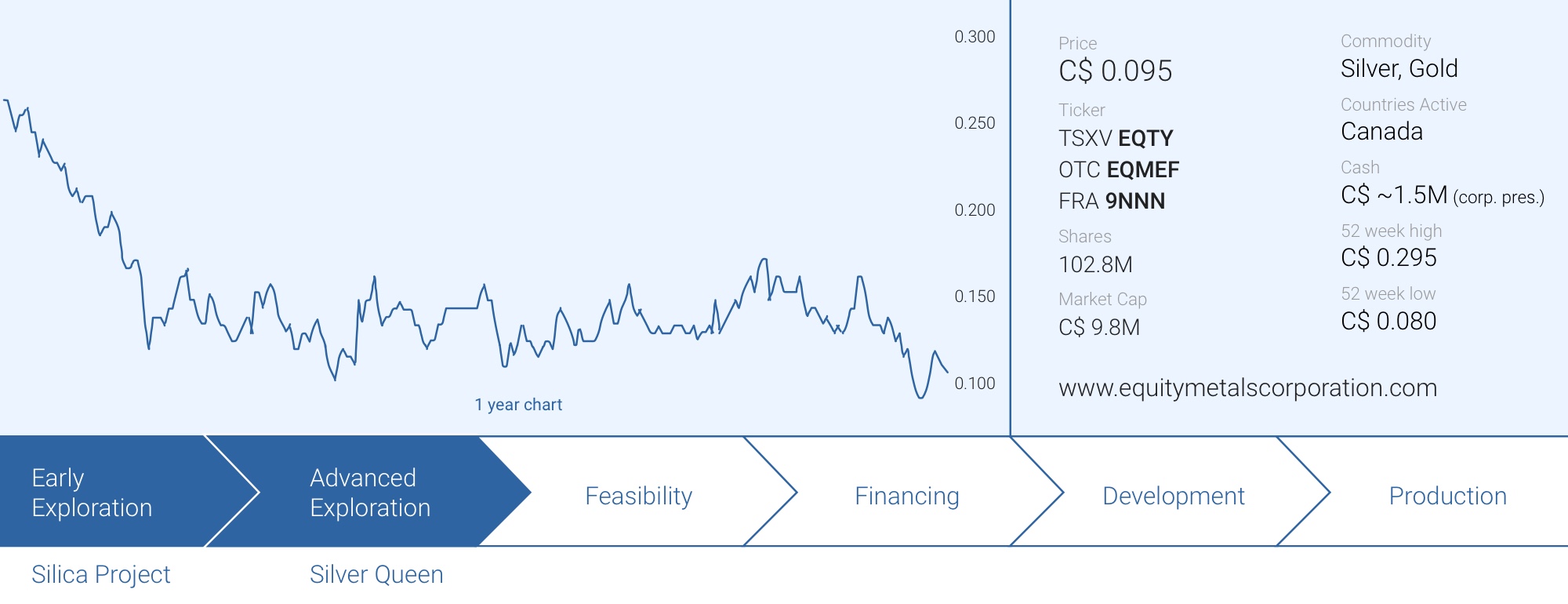
Equity Metals (EQTY.V) has been very successful exploring the Silver Queen property so far. It is a very narrow vein deposit with the width of the highest-grade mineralization usually measured in centimeters, which makes it even more impressive that the company’s hit ratio is excellent there. And thanks to the very high-grade nature of these narrow veins and lower grades adjacent to them, the diluted grade over a wider width should still be acceptable and handsomely meet cutoff grade.
We recognize the same methodology used by sister company Southern Silver. Rather than aggressively pursuing blind targets or drilling Hail-Mary wildcat holes, Equity Metals’ approach at Silver Queen is pretty similar to Southern Silver’s approach at Cerro Las Minitas in Mexico, where exploration uses known mineralization as a starting point and extends mineralization with small increments in step-out drill programs, allowing the company to achieve a high success ratio. It is easy to miss these very narrow veins at Silver Queen, but Equity Metals’ approach is working.
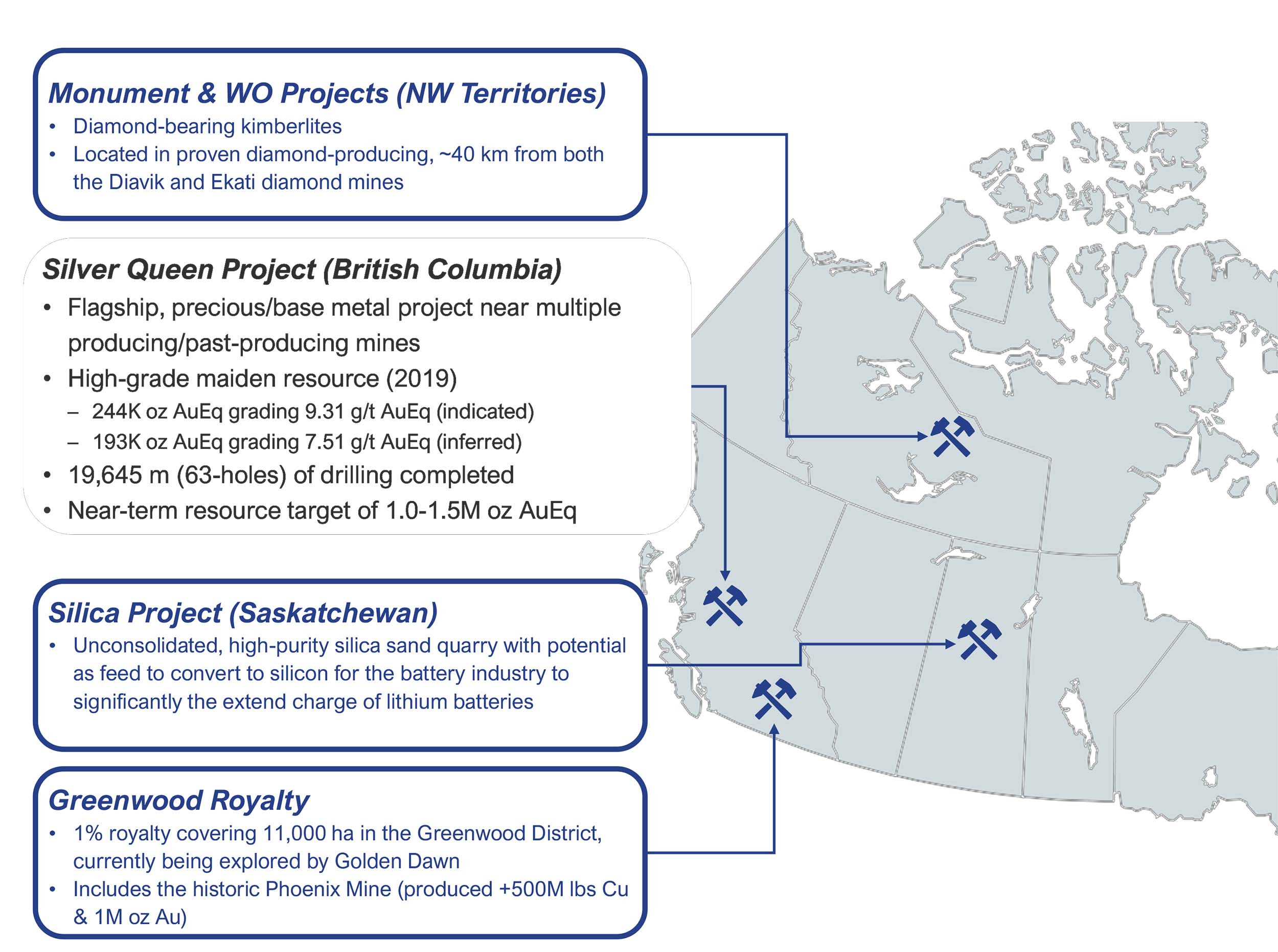
Recent exploration results at Silver Queen further confirm the exploration theory
Equity Metals continues to work towards confirming the continuity of the mineralization at Silver Queen where the area between the Camp Vein and the No3 Vein now also appears to be mineralized. The so-called Sveinson Extension yielded excellent results and paves the way to add more tonnage and ounces to the Silver Queen resource. Figuring out the continuity of the mineralized system was a key objective of the past few drill programs, and Equity has done a good job so far.
The Sveinson target, the previously undrilled area in between the Camp Vein and the No3 Vein, was successfully drilled. In a March exploration update, Equity Metals started to report very high-grade intervals over the typical narrow width.
Most of the previous drilling was focusing on the No3 Vein and the Camp Vein but a reinterpretation of historical data resulted in Equity’s technical team deciding on drilling a few holes in the Sveinson zone, which is located in between both known vein systems. The first few holes drilled at the Sveinson target were already quite good and now the company has followed up these earlier returns with assay results from an additional five holes drilled on the western side of Sveinson.

And some of those holes contained some very nice surprises. While the mineralization is quite narrow (with reported intervals of just 0.3-0.4 meters which is in line with some of the narrower widths encountered elsewhere on the Silver Queen property, the grades are phenomenal in certain areas.
Hole 59 for instance encountered two distinct but very high-grade zones of mineralization. At a depth of 95.6 meters down-hole, it encountered 22.5 g/t gold, 3473 g/t silver 4.3% Zn+Pb and 5.6% copper. That’s the equivalent of a grade of 77.8 g/t gold-equivalent or 5,840 g/t silver-equivalent.
A bit deeper, at a down-hole depth of 204.4 meters to be exact, it encountered 1 meter of 17.5 g/t gold with much lower silver and base metal values while a narrower interval of 0.3 meters contained 61.5 g/t gold-equivalent or 4,612 g/t silver-equivalent.

As you can see above, the other holes also encountered some interesting grades with, for instance, 1.2 meters of 10.7 g/t gold-equivalent in hole 57 and 0.6 meters of 11 g/t gold-equivalent in hole 61.
The company has now released the assay results from all thirteen holes drilled on the western half of the Sveinson zone and it’s getting a better understanding of the area. Sveinson appears to be a structural zone which forms the transition from the gold-rich southern portion of the No3 Vein to the silver-rich Camp Vein targets. The Sveinson target has now reached a strike length of 1.25 kilometers, and the entire strike length of the area of interest is now at least 2.5 kilometers.
At the end of the first quarter, Equity Metals released yet another batch of assay results from three holes from the Camp and Sveinson targets. Those are the first three holes of the winter 2022 drill program.Those three holes tested the area where the Camp Vein seems to be transitioning in to the Sveinson vein and once again ‘continuity’ was the key word.

And just last week, Equity Metals released the assay results from the final four holes drilled on the Camp-Sveinson target as part of the winter 2022 drill program. One hole, SQ22-072 was drilled at Sveinson while the other three holes (SQ22-073-075) were step-out holes from the known Camp Vein.
These latter three holes are very interesting as all three intersected high-grade mineralization which again validates the company’s exploration theory as the holes extended the known vein system laterally for an additional 40 meters while encountering the mineralization up to a depth of 150 meters below surface. This means the Camp Vein still remains open towards the west (along strike) and at depth, and both growth zones will be drilled later this year to further expand the footprint and tonnage of the Camp Vein system.

Hole SQ22-072 was drilled at the Sveinson zone and we still see the typical distribution of higher gold grades in the Sveinson area.
Due to these strong results, the company has commissioned an additional 1,500 meter drill program targeting the western extension of the Camp Vein as well as the western margin of the Sveinson target (where it seems to be connecting to the Camp Vein system) and drilling should be completed soon.
Moving other to the other parts of the Silver Queen project, in a recent exploration update, Equity Metals also announced it was able to extend the NG3 Vein to a strike length of in excess of 300 meters. The NG3 Vein is located further along strike from the No3 Vein but is bending in a slightly different direction, so for simplicity’s sake, this vein got a new name rather than seeing it as an extension of the No3 Vein.

Plan Map of targets on the Silver Queen vein system, BC
At the end of April, Equity reported on the assay results of six holes drilled to confirm the continuity between the historical intercepts in that area, and previous drilling completed by Equity Metals. This drill program was successful as the continuity of the mineralization was confirmed over a strike length of 300 meters, but also important, Equity was able to chase the mineralization to a depth of 240 meters (and in some areas of the NG3 vein, mineralization was encountered up to a depth of 400 meters). Continuity is king, and these few holes filled in a few blanks and has now established a total mineralized corridor of approximately 2.5 kilometers.

Dusting off the La Ronge Silica project
While all efforts and attention were geared towards the flagship asset in British Columbia, Equity Metals has two additional irons in the fire. Not only does the company still own the majority stake (of almost 58%) in the Monument diamond exploration project, it also fully owns the La Ronge Silica project in Saskatchewan, located approximately 60 kilometers south-southeast of La Ronge.
The project was originally acquired by New Nadina (Equity’s predecessor) as a fracking sand project. It is an historical producing asset, but Equity Metals recently completed test work on the asset and found out it would be able to produce high-purity Silica with a SiO2 content of in excess of 98%. While silica is currently mainly used to produce glass (which is produced by combining silica sand with limestone and soda ash at high temperatures), Equity Metals seems to be expecting a lot from the EV sector. Silicon (which is made out of Silica) is currently under investigation by the industry to either replace carbon or improve the performance of carbon in lithium battery anodes, which would improve the battery function and extend the time in between charging periods.
As we are not very familiar with silica mining and the applications for high-purity silica sands, we had a chat with Joe Kizis, Equity’s president. As Robert MacDonald (VP Exploration) is focusing on the Silver Queen project, Joe is the right man to talk to about the silica sands project.
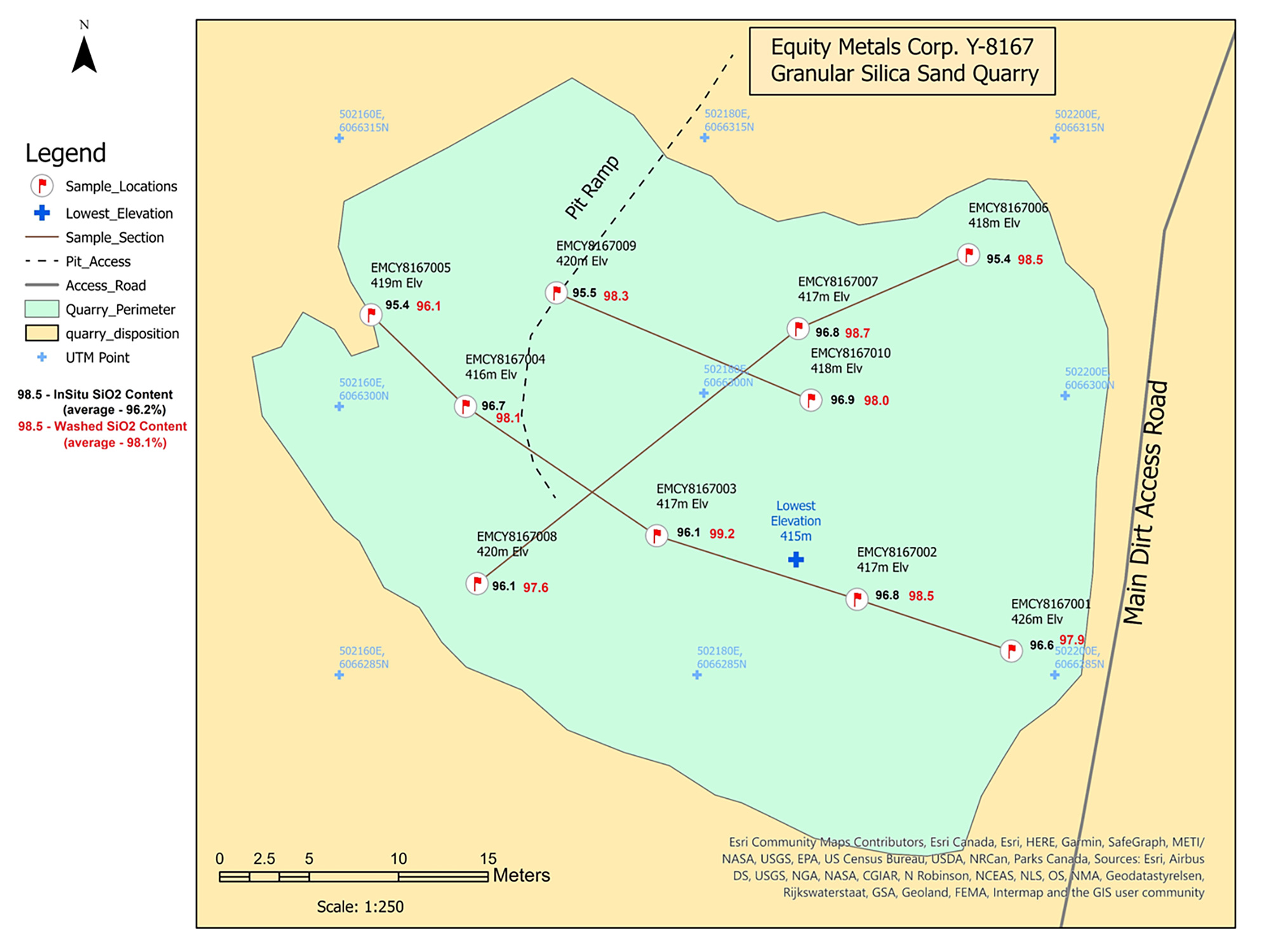
Digging deeper with President Joe Kizis
The La Ronge asset was a little bit a ‘forgotten asset’ in your portfolio as the attention is obviously going to the flagship Silver Queen project. What made you decide to go back to the Silica asset to further advance it?
We took over management of New Nadina because we saw great potential in the Silver Queen property, but we were aware of a number of other assets within the Company. We fully intended to evaluate those other assets as time and funding allowed. The Silica property was one of those assets.
How accessible is the property?
Accessibility is excellent… it is just off a maintained gravel road between La Ronge and Flin Flon.
This is a historical sand quarry which likely originally was acquired to look into potentially supplying fracking sand. May we assume that plan fell through when the oil market collapsed? Is selling fracking sand still an option further down the road or is this no longer something you’d be looking at? Is there anything useful you can say about the fracking sand market?
New Nadina acquired the original lease in the 1990s. We think the lease was acquire as a potential source of fracking sand, but we do not have records verifying this.
I saw a recent article about using silicon metal to increase battery charge times and remembered an historic assay in the New Nadina files of two sand samples from the quarry showing high purity, so our first task before we could evaluate potential value of the material was to determine if those values were representative of the quarry. Because Rob’s time was largely consumed by Silver Queen, one of our Directors (John Kerr) and I took on the task of following up on the silica sand idea.
We hired a consultant who collected representative samples and had them analyzed. The results were encouraging, but not quite to the 98% SiO2 purity we understood to be necessary
However, the analyses suggested that removing clay would increase the purity, so we worked out a lab procedure with our assay lab for them to remove clay by washing. Results indicate this simple procedure would result in +98% SiO2 purity needed as a feedstock to produce silicon metal.
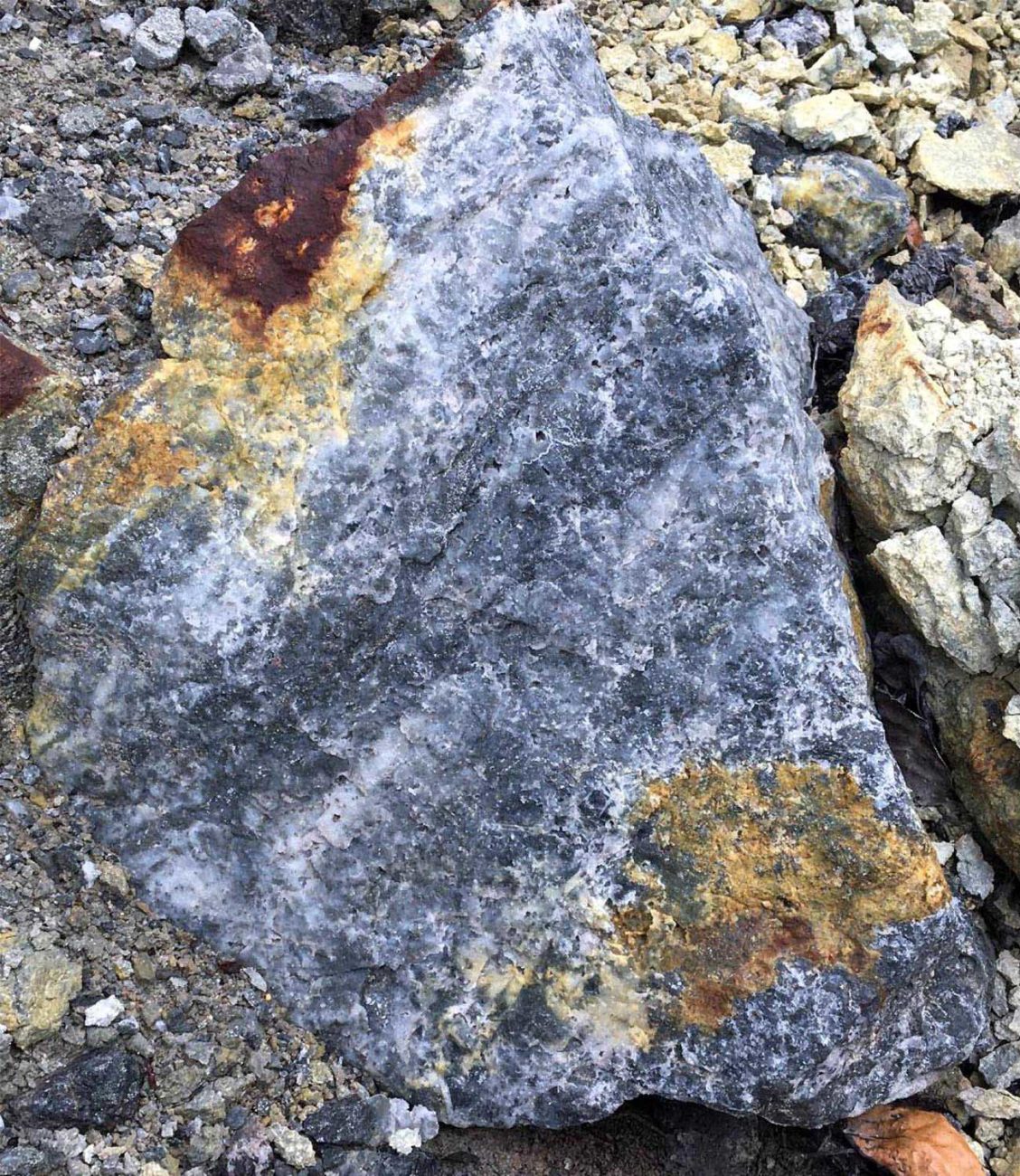
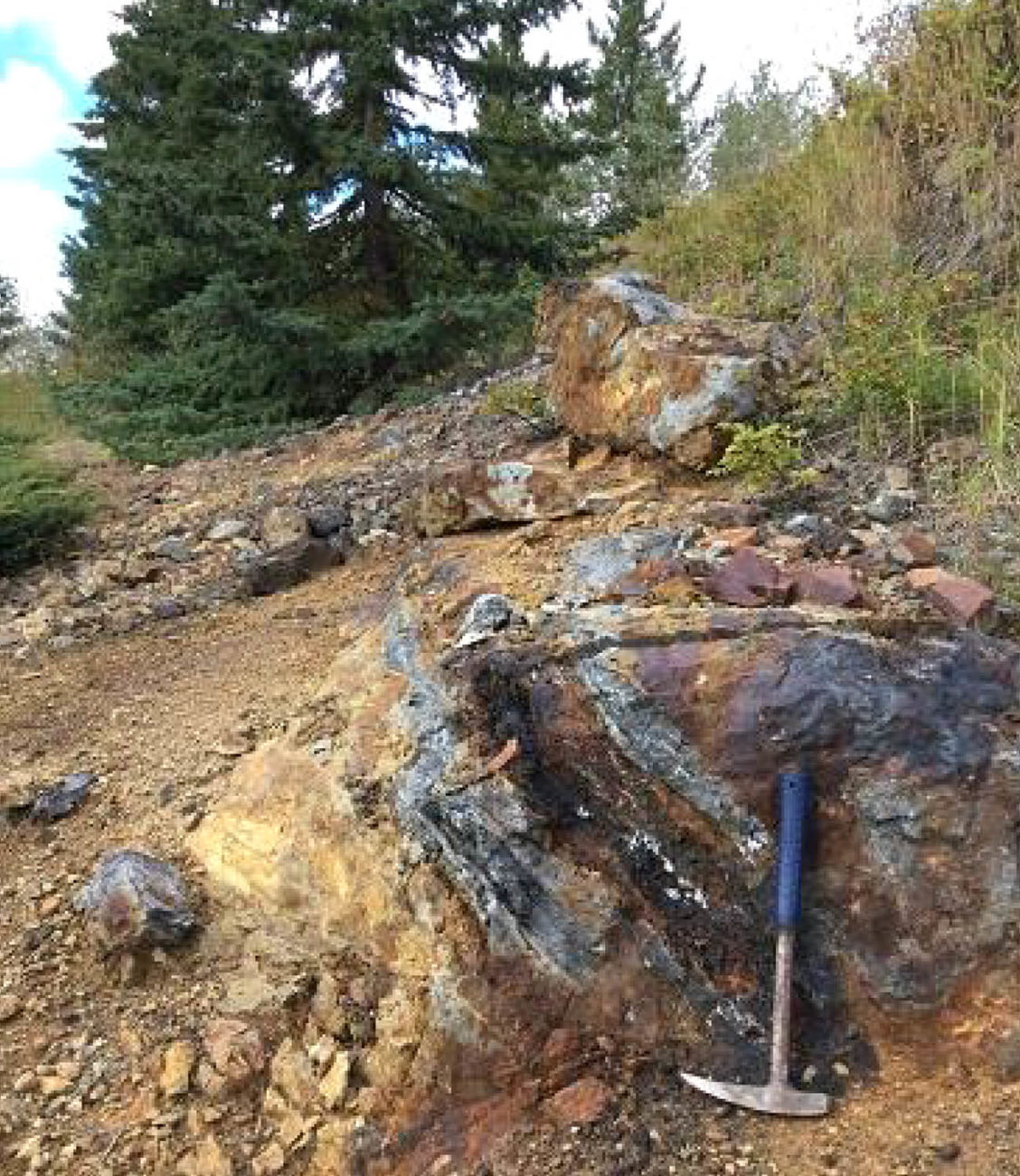
You seem to be focusing on the EV applications for high purity silica. Could you elaborate how silica is used in the EV sector?
Silica sand (SiO2 and other elements) is the feedstock to produce silicon (Si) metal. Basically, you are removing oxygen (O2). Silicon has a strong ability to hold an EDF0F4electric charge, and much research is being conducted to use this feature to increase the time between charging lithium-ion batteries, as well as the time to recharge those batteries. These features are believed to be important in order to gain wide acceptance of EV vehicles.
What are the most important features for silica to be used for EV applications? Which deleterious elements and impurity levels do investors need to keep an eye on?
There are several methods to convert silica sand to silicon metal, and most use quite a bit of electricity, so purity is important. Iron concentrations may be an issue for some methods, but our assays indicate very low concentrations.
The largest impediment to adding silicon to batteries is the resulting amount of physical expansion, and this is where a lot of the research is being done. Utilizing nano particles of silicon has shown promise we understand.
It is still early in our evaluation, but in addition to purity, the La Ronge silica sand has another important attribute. The sand is very friable so mining would not require blasting or crushing. Cheap mining would be a very important advantage for this project compared to other silica source material being considered, such as quartzite and quartz veins.
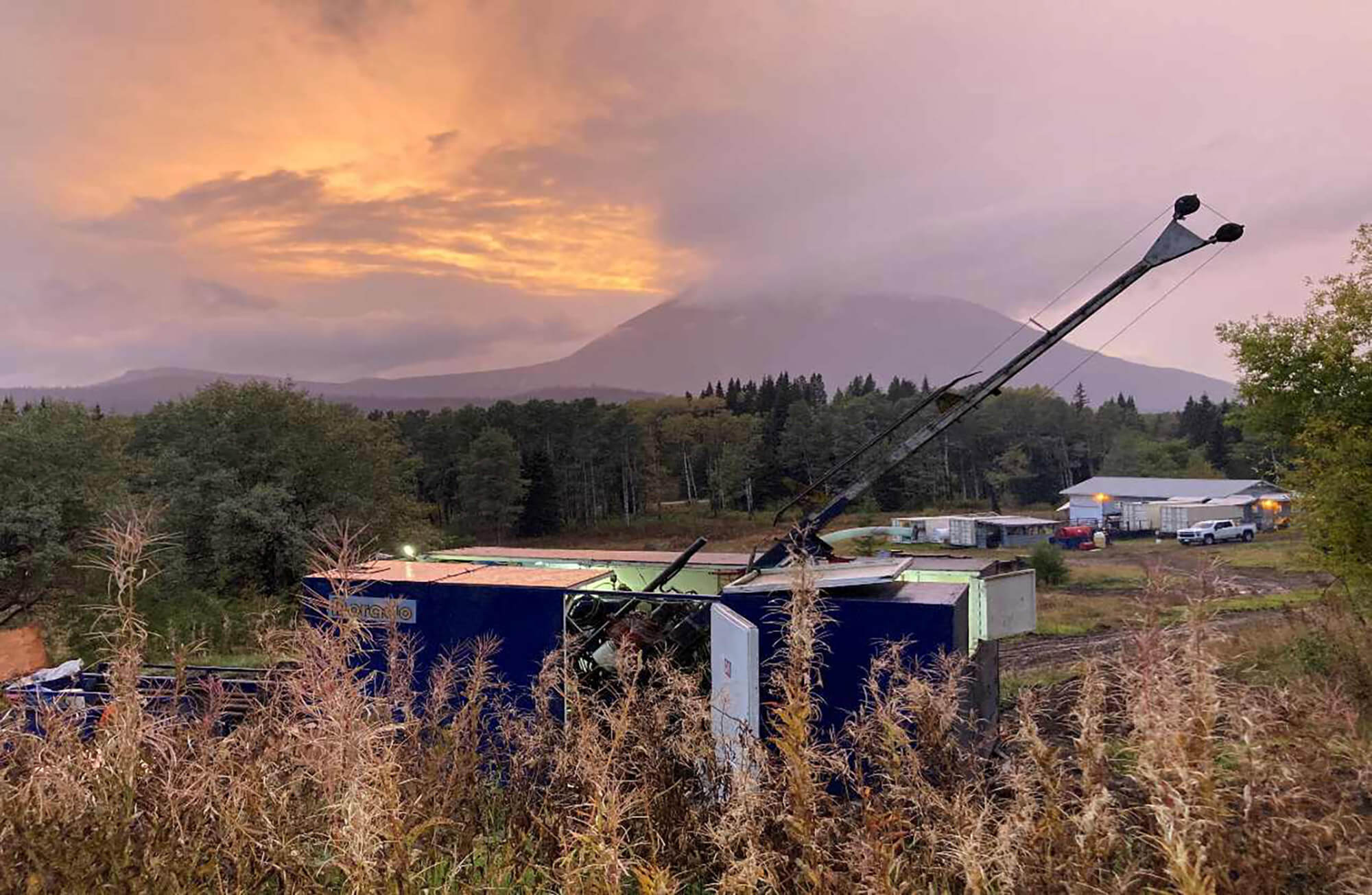
Conclusion
While Equity Metals’ sidestep to the silica project is interesting, we hope and expect the company will keep a clear focus on its Silver Queen flagship project in British Columbia. Although the market isn’t exactly kind to exploration companies these days, connecting the dots at Silver Queen and updating the resource will ultimately be what drives the value of the company as Equity will have something tangible to show the market. Ultimately, shareholders originally invested in Equity Metals to gain exposure to the gold, silver and base metals at the Silver Queen project and not for a sand quarry.
With an updated resource it should also be easier to raise funds, although we hope the risk appetite will soon return to the junior exploration markets as the current climate isn’t kind to companies. Fortunately Equity Metals filled up its treasury in Q4 2021 when it completed a C$3.6M financing in a combination of hard dollars at C$0.14 and flow-through at C$0.15. According to the company’s most recent financials, Equity had a working capital position of around C$1.7M and while this should be sufficient to complete the 2022 work programs, Equity will have to start looking around after the summer to figure out its budget for the next exploration programs.
Disclosure: The author has a long position in Equity Metals and participated in the previous financing. Equity Metals is a sponsor of the website. Please read the disclaimer.
